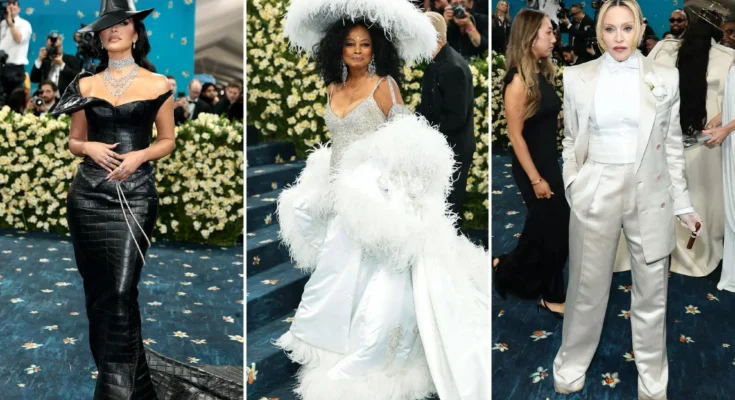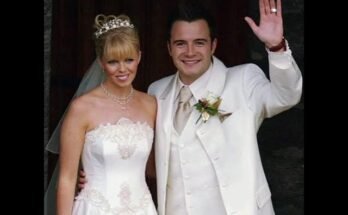The Met Gala has always been more than just a fashion event. It is a cultural barometer, a mirror reflecting society’s evolving aesthetics, values, and icons. On the first Monday in May 2025, as the red carpet unfurled outside the Metropolitan Museum of Art, an unmistakable buzz rippled through the crowd — Madonna was back.
It had been seven years since the Queen of Pop last graced the Met Gala, a notably long absence for a woman known for her unwavering dominance over both stage and spectacle. In 2018, she had appeared in dramatic, ecclesiastical black — a gothic interpretation of “Heavenly Bodies” that dripped with pearls, crosses, and medieval mystique. But this time, there were no theatrics, no over-the-top regalia, no high-concept shock value. At 66, Madonna walked into the 2025 Met Gala with the kind of quiet power that only true legends possess — draped not in extravagance, but in refinement.
She wore a pristine white tuxedo, tailored by Haider Ackermann for Tom Ford. The crisp lines of the ensemble contrasted gently with the softness of sheer embroidered gloves, and at her lapel bloomed a boutonnière, a delicate yet deliberate nod to classic dandyism. The bow tie framed her face — untouched by the usual barrage of contour and shimmer — with a softness that was striking in its simplicity. And then there was the unlit cigar. Held playfully between her fingers, it wasn’t about rebellion. It was a wink. A memory of the Madonna who’d once lit up stages and controversies alike. She didn’t need the flame — her presence alone was enough.
The theme of the evening, “Superfine: Tailoring Black Style,” celebrated the cultural legacy of Black dandyism — a tradition rooted in elegance, defiance, and identity. While some questioned whether Madonna’s outfit connected to the theme, others saw her look as an homage to the revolutionary spirit of those who had used fashion to reclaim identity and rewrite the rules of appearance. Her choice to step away from costume and lean into authenticity reflected that same defiant grace.
But perhaps the most talked-about element of Madonna’s appearance wasn’t her clothes at all. It was her face.
Gone were the dramatically sculpted cheekbones and the internet-fueled speculation about cosmetic procedures that had surrounded her in recent years. In their place was something far more powerful: a woman simply allowing herself to be seen. Her complexion was fresh, her makeup minimal, her expression serene — and for many, it was like seeing her again for the first time in years.
Earlier that year, she had shared a barefaced video on Instagram, a quiet declaration that she was embracing a different kind of beauty. The response was overwhelming. Fans and critics alike flooded social media with comments not about her age, but about her courage. “Looking like herself again,” read one Facebook post that quickly went viral, capturing the collective sense of recognition.
This wasn’t just a change in appearance. It was a turning point in narrative.
For decades, Madonna had built a career on transformation. From the punk provocateur of the ’80s to the spiritual seeker of the ’90s, from disco dominatrix to couture queen — she had been every woman, sometimes all at once. And yet, this 2025 version felt both new and deeply familiar. She wasn’t shedding skin, she was returning to it.
Her evolution mirrored a broader cultural shift. In a world increasingly saturated with filters, fillers, and facades, authenticity had become the most radical form of rebellion. Celebrities, once pressured to chase eternal youth, were now using their platforms to challenge outdated beauty standards. And as always, Madonna was not following the trend — she was helping define it.
As the cameras flashed and journalists scrambled to capture her every move, she stood poised and unhurried, smiling as if she knew something the rest of the world was only just beginning to understand.
Later that night, as discussions of best-dressed lists and symbolic choices flooded the internet, Madonna’s look dominated headlines. Not for shock value, not for controversy — but for elegance. For authenticity. For being unmistakably, unapologetically herself.
And in doing so, she reminded the world that true reinvention isn’t about becoming someone else. It’s about having the courage to be who you are — and letting the world see you, unfiltered.
Would you like this as a formatted blog post or downloadable article?



